Do you need a retaining wall in Savannah, GA or nearby?
While a retaining wall might seem like a simple project at first glance, because it is designed to hold and retain soil, choosing the right hardscaping contractor is essential!
What are retaining walls?

A retaining wall is a structure that holds or retains soil behind it, using materials like concrete blocks, poured concrete, treated timbers, rocks, pavers or even boulders. Sometiems retaining walls are used for safety purposes or functinality. They can help create usable space, fix grading or slope issues, and solve other site problems.
The structure of a retaining wall is designed to retain soil and prevent erosion, which means there are engineering components and types of retaining walls for specific scenarios. For example, a shorter retaining wall made from paver bricks around a landscaping bed doesn’t need reinforcement, whereas a wall five feet in height protecting the backside of your home does. Combining engineering and the best fit of materials, retaining walls can be constructed from various materials, including concrete, rocks, and wood.
Here are the most common types of retaining walls!
8 Common Types of Retaining Walls
Similar to a patio, you can choose from numerous materials and layouts for your Savannah retaining wall. However, there are walls that are ideal for specific purposes depending on the height, situation, and amount of materials being held back. Lets take a look at the most common types below!
Photo sources and detailed descriptions of retaining walls can be found on SkyCiv here.
1. Gravity retaining walls
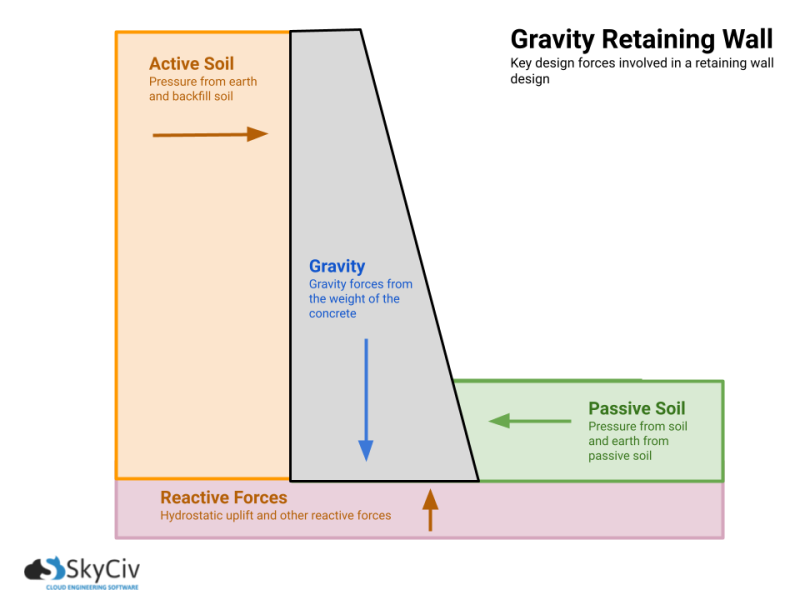
Gravity retaining walls rely on their own weight and setback to retain soil, while reinforced retaining walls use reinforcement to improve their ability to retain soil. Shorter walls (often less than two feet in height) are typically gravity walls and you will commonly see them around garden beds or infused within landsacping. The idea is that the weight of the wall itself is enough to resist the active soil pressure.
Reinforced walls such as acnhored or cantilever retaining walls are stronger and can hold back more active soil and are required based on the height of your retaining wall.
2. Anchored Retaining Walls
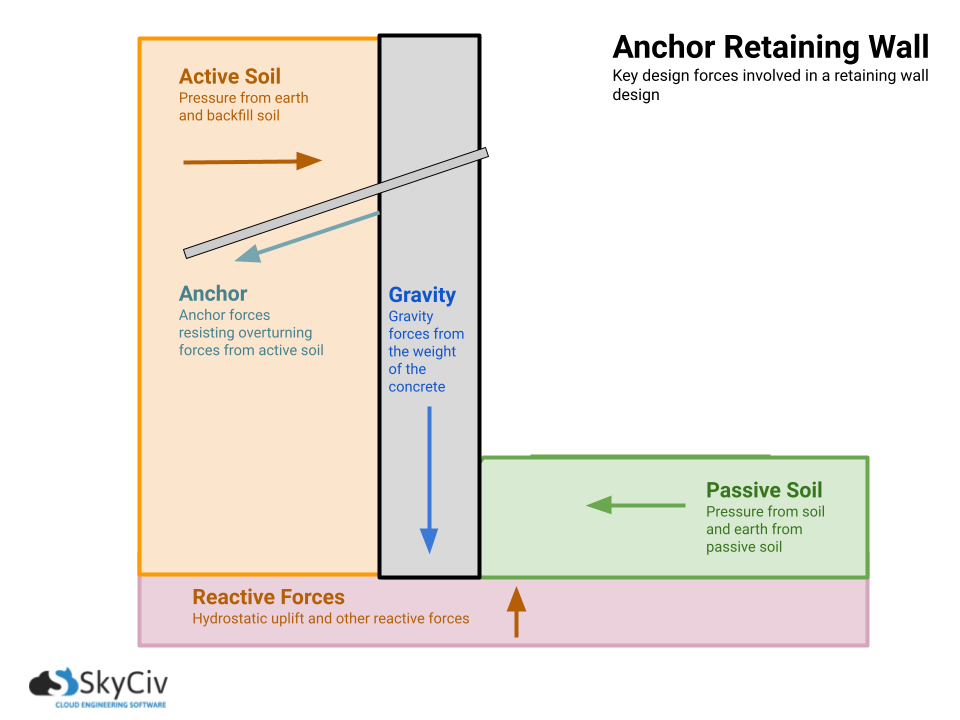
Anchored retaining walls utilize a gravity wall with a built-in anchor that is installed within the active soil it is holding back. The anchor forces the overturning forces in the active soil as the photo above describes. The idea is that the active pressure from the soil firmly secures the anchor, thus increasing the strength of the wall. Here at Coastal Hardscapes Savannah, we can determine when an anchored wall is required for your project.
3. Cantilever Retaining Walls
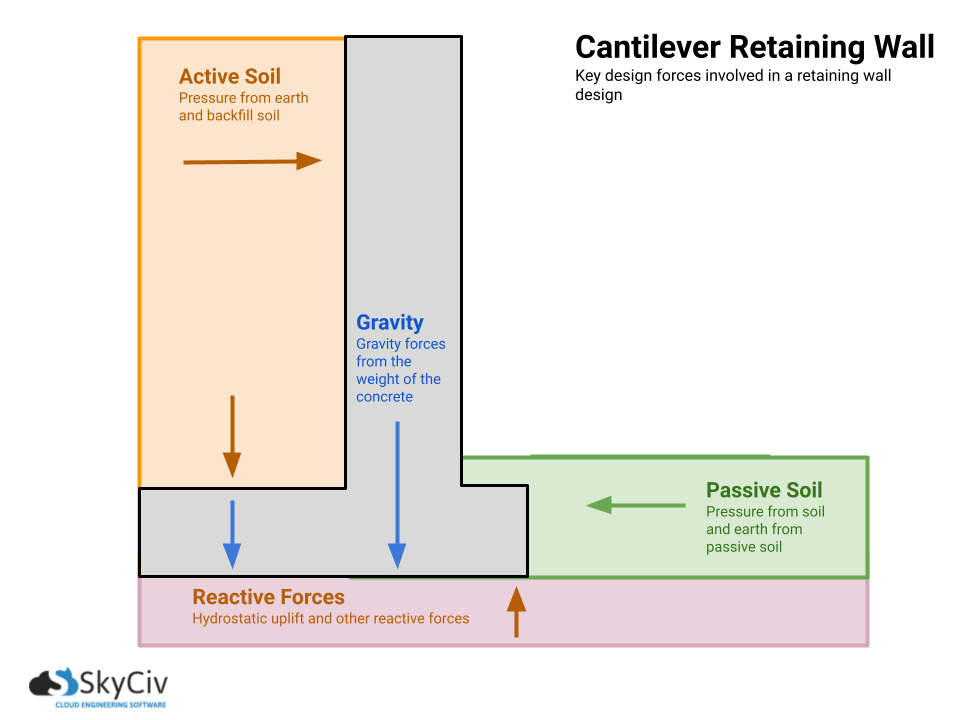
The additional base component is what separates a cantilever retaining wall from a gravity wall. The active pressure down on the base of the retaining wall strengthens the wall and keeps it upright. As the picture shows with the arrows, the forces work in unison to help strengthen the wall.
4. Segmental Retaining Walls (SRWs)

One of the most commonly installed retaining walls that offers strength and curb appeal is a segmental retaining wall (SRW). Pavers, blocks, or the Allan Block products offer modular and interlocking concrete masonry blocks that allow you to design and build beautiful retaining walls. These walls are great for ease of use and maintenance-free installation. These are the most commonly seen retaining walls in the Savannah area!
5. Natural Stone Walls
Natural stone walls can be a slightly more expensive option compared to other materials, but they are durable and create a timeless look using natural stone stacks and materials to create a retaining wall. With the common goal of retaining soil, the active soil will determine whether a cinderblock base or concrete is required when you use natural stones.
6. Gabion Walls
Gabion walls are a retaining wall that uses a wire container filled with rocks or other materials to create a sturdy and durable wall stone along waterways. These are not as aesthetically pleasing and often used by civil engineers for road construction. However, in Savannah, its coastal areas are beneficial near docks and water areas.
7. Crib Retaining Walls
Crib walls are used more frequently in commercial spaces or around roadways and consist of an interlocking structure made from precast concrete or sometimes timber. They are great for large spaces that need to retain large amounts of active soil.
8. Piled Retaining Walls
Piled Retaining Walls use a line of reinforced concrete piles or even wood beams that are driven down into the soil to counter vertical and horizontal forces. These are great for places with sudden elevation changes and you can see them along shorelines quite often.
Most of the retaining walls we install utilize pavers and stones, and depending on specific engineering necessities, we often anchor our walls even with segmental blocks. For smaller heights, we use gravity walls made of any material of your choice. However, from utilizing natural stones for aesthetic purposes to incorporating your irrigation system, retaining walls can offer a variety of styles, and when it comes to selecting the best fit, our design team can come in to help!
Designing a Retaining Wall
When designing and selecting a retaining wall, you will have to consider the height, slope, and surrounding landscape to ensure a stable and functional wall. First and foremost, functionality and stability are the top priority of any new retaining wall.
From there, you can choose a design that complements the natural surroundings and adds visual interest to the landscape. You can add and incorporate steps, seating, or planters into the design, from stones to wood, to create a functional and beautiful wall. We have even added fireplaces to the retaining walls!
Retaining Wall Installation Savannah GA
Are you looking for the best retaining wall installation company in Savannah? If so, we can help. First, proper installation is crucial to ensure the retaining wall functions as intended and lasts very long. Proper installation is a must to prevent soil erosion and potential issues. Even when building a multi-tiered patio, it is essential to follow engineering guidelines for slope and height. This is why hiring a professional landscape contractor can ensure that the retaining wall is installed correctly and designed using architectural renderings.
Retaining Wall Materials and Colors
Paver blocks and wall stones can infuse any retaining wall with colors or a natural look. Concrete wall blocks come in various shapes and colors to suit any project. Natural stone-like finishes can enhance landscape contours and add structure and functionality. With some of our projects, we use a combination of materials, such as concrete blocks and natural stone, to create a unique and visually appealing wall with multiple layers, landscape features, and steps.
We always say to choose a color that complements the surrounding landscape and adds visual interest to the wall!
In Conclusion – Retaining Walls Savannah that looks great!
As you now understand, retaining walls are versatile and functional elements that can add beauty and functionality to any landscape. You can select a variety of materials, styles, heights, and dimensions that complement your home or business.
Retaining walls are great when you have areas with two different elevations or want to add multiple layers of patios and walkways to your landscaping. While athletics are important to creating a unique and visually appealing outdoor space, don’t forget the importance of engineering. To properly hold back active soil and prevent it from sliding, you should always ensure you do not try to install a retaining wall yourself.
Instead, let the pros as Coastal Hardscapes of GA and SC help you with your next hardscape project!
FAQ:
1. How do you maintain a retaining wall?
Some maintenance is essential to ensure the retaining wall remains stable and functional, mostly in the form of inspections for damage or erosion. General inspection allows you to make repairs as needed. You can also consider using a sealant or coating to protect the wall from the elements and extend its lifespan. Be sure to keep the area around the wall clear of debris and vegetation to prevent erosion and damage.
2. What are some creative options for retaining walls?
Incorporating a fountain or water feature into the design can make your retaining wall look fantastic and create a soothing and peaceful atmosphere. Many Savannah clients incorporate seating or steps into the design to create functional and beautiful walls around their homes. A retaining wall can frame a pool or outdoor living space, creating a unique and visually appealing design. See a picture of this retaining wall patio with different levels:

3. How much do retaining walls usually cost?
Due to their structural nature and expensive building materials, most retaining walls cost $20-$50 per square foot. Timber and concrete blocks can be cheaper, while natural stone and other advanced materials cost more per square foot.
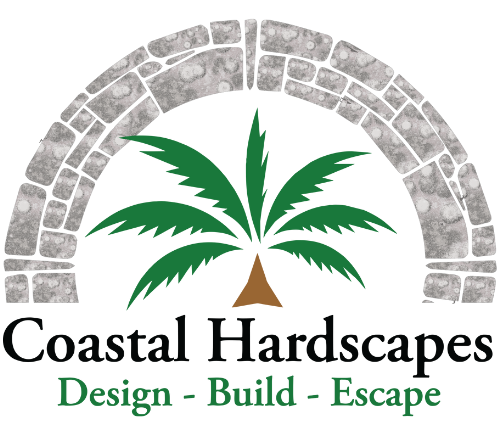
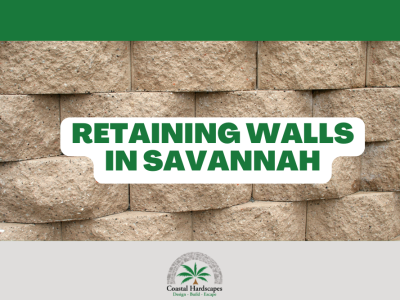
 Finding the Best Hardscape Contractor for Your Outdoor Space [Guide]
Finding the Best Hardscape Contractor for Your Outdoor Space [Guide]
Leave a Reply